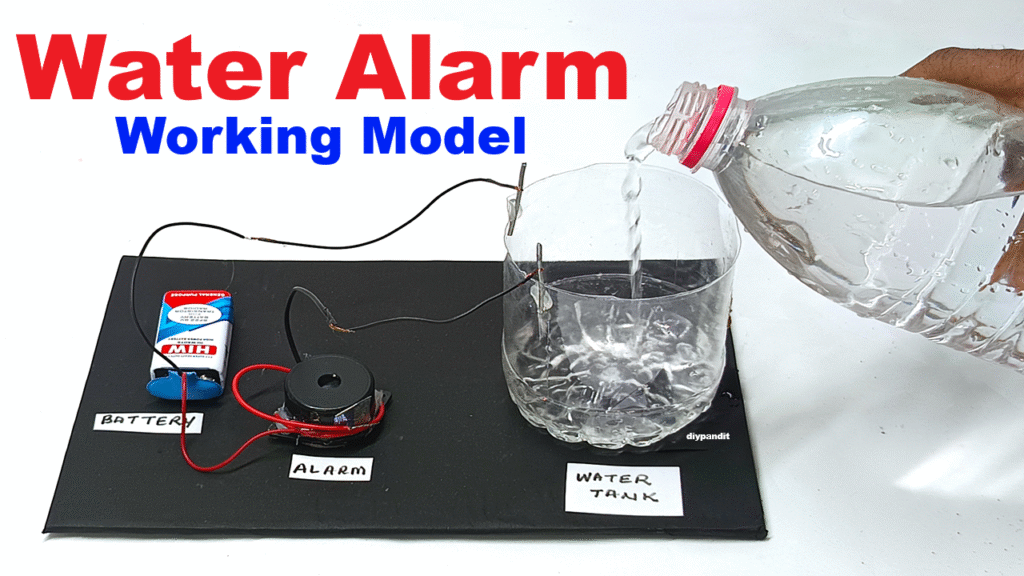Introduction
A water overflow alarm is an electronic device designed to prevent the wastage of water. It alerts people when a water tank becomes full, usually by producing a loud sound or turning on a light. This simple system helps in saving water, electricity, and avoids unnecessary mess caused by overflow.
The device works using sensors or metal probes fixed at the top level of the water tank. When the water reaches the maximum level, it touches the sensor, completing an electric circuit. This activates the buzzer or alarm. Some advanced systems also include automatic pump cut-off, which stops the water pump when the tank is full, providing extra convenience.
Water is a valuable resource, and saving it is very important in today’s world. A water overflow alarm is cheap, easy to install, and very effective for homes, schools, and offices. It is also a popular science project for students because it teaches how electronics can solve real-life problems.
How To Make This Model
This model shows how a simple electrical circuit can detect water levels.
Water conducts electricity – so when it connects the two metal leads, it completes the circuit and activates the alarm.

This technique is useful for water tank overflow alarms, flood warning systems, and smart irrigation.
Video Steps to Make the Model:
Step 1: Prepare the Base
- Take a cardboard base and stick a small plastic container on it (acts as water tank).
Step 2: Set Up the Circuit
- Connect battery’s positive wire to one sensor pin (pencil lead or metal pin).
- Connect buzzer’s positive terminal to the other sensor pin.
- Connect the negative terminal of buzzer back to battery’s negative end.
- You may use a switch between battery and buzzer for easy control.
Step 3: Fix the Sensor in Container
- Place the 2 pencil leads or pins inside the water container, fixed at a certain height.
- Keep them close but not touching.
- When water rises and touches both leads, it completes the circuit.
Step 4: Test the Model
- Pour water slowly into the container.
- As water touches both leads, the circuit closes, and the buzzer sounds (or LED glows).
In conclusion, a water overflow alarm is a simple, useful, and smart invention that helps conserve water and makes life easier.

